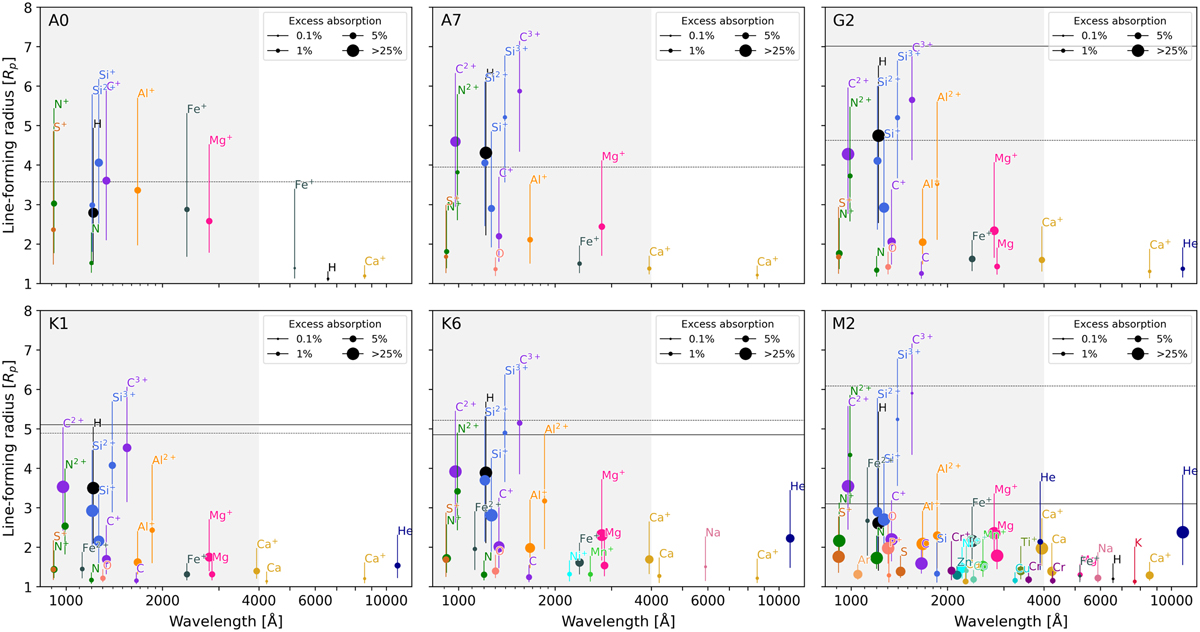Fig. 3

Download original image
Line-forming radii for the hot Jupiter planet around stars of different spectral types. The outflow models used are Parker winds with Ṁ = 1010 g/s and (self-consistent) temperatures of 7000, 7500, 8000, 8000, 8000, 8000 K for the A0, A7, G2, K1, K6, M2 spectral types, respectively. The marker size indicates the excess absorption at line center. The figures show all spectral lines deeper than 1% at λ < 4000 Å and deeper than 0.1% at λ > 4000 Å (Table C.1 lists the wavelength of each line). In every panel, the gray shaded area demarcates the 4000 Å boundary, the dotted line indicates the Hill radius and the solid line shows the stellar radius. Gas at larger radii than the stellar radius can contribute to the transmission spectrum if it is located along the direction of the stellar light rays, instead of at high impact parameter.
Current usage metrics show cumulative count of Article Views (full-text article views including HTML views, PDF and ePub downloads, according to the available data) and Abstracts Views on Vision4Press platform.
Data correspond to usage on the plateform after 2015. The current usage metrics is available 48-96 hours after online publication and is updated daily on week days.
Initial download of the metrics may take a while.


